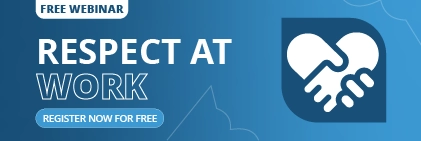The Australian workplace is built on the principles of respect, safety, and fairness. However, sometimes these principles are tested by personal harassment, a behaviour that can create a hostile, intimidating, or offensive work environment. As an Australian employee, understanding what constitutes personal harassment is crucial for your well-being and for fostering a positive work culture.
What is Personal Harassment?
Personal harassment is any unwelcome conduct directed at an individual or group. It can be subtle or overt and can manifest in various ways. Let’s look at some specific examples relevant to the Australian workplace:
- Verbal Abuse: This includes name-calling, insults, threats, or mocking comments. Imagine a colleague consistently making fun of your accent or making derogatory jokes about your background—this falls under verbal harassment.
- Sexual Harassment: This is a serious issue that includes unwanted sexual advances, comments, gestures, or physical touching. The Australian Human Rights Commission (AHRC) found in its 2022 survey that 33% of people who have been in the workforce in the past five years have experienced sexual harassment at work. This highlights the importance of recognising and reporting such behaviour.
- Stalking: This involves following or repeatedly contacting another person in a way that causes them to feel uncomfortable or fearful. This can also extend to the digital realm, such as excessive and unwanted online messaging or monitoring.
- Bullying: This involves repeated, intentional, and aggressive behaviour intended to intimidate, degrade, or humiliate an individual. An example could be a manager constantly belittling an employee’s work in front of others or a colleague intentionally spreading false rumours to damage someone’s reputation.
- Discrimination: In Australia, it is against the law to treat someone differently based on a protected characteristic, such as their race, gender, age, sexual orientation, religion, or disability. The Fair Work Act 2009 and various state and territory anti-discrimination laws protect employees from this type of harassment.
- Social Exclusion: This can be a more subtle form of harassment, involving the deliberate isolation of an individual. This might include being consistently left out of team meetings, social events, or even important email chains, which can hinder career progression and create a sense of alienation.
It’s important to remember that personal harassment can extend beyond the physical workplace, occurring through electronic communication, social media, or work-related events outside of business hours.
Your Rights and Responsibilities
Australian employers have a legal obligation to provide a safe and healthy work environment. This includes having a clear policy on harassment and discrimination and ensuring all employees are aware that such behaviour will not be tolerated.
If you believe you or a colleague has been subjected to personal harassment, it’s essential to act. Here’s what you can do:
- Document Everything: Keep a detailed record of the incidents, including dates, times, locations, and any witnesses.
- Speak Up: If you feel comfortable, you can address the behaviour directly with the person involved. Sometimes, people are unaware of the impact of their actions.
- Report It: Your first point of contact should be your supervisor, a human resources representative, or a designated harassment contact person within your organisation.
- Seek External Advice: If the issue is not resolved internally or if you feel your employer is not taking your concerns seriously, you can seek advice from an external body like the Fair Work Commission, the AHRC, or a legal professional.
By understanding what personal harassment is and knowing your rights, you can contribute to a respectful and inclusive workplace for all Australians.
Read More About Personal Harassment:
- New To Remote Working? Here’s How to Ease into It!
- 10 Must-Have Video Conferencing Etiquette For Remote Working Teams
- Wage Theft in Australia: What Employers Need to Know in 2025
- 5 Ways To Transform Compliance Into Competitive Advantage
- How To Identify, Prevent, And Respond To Power Harassment In The Workplace





